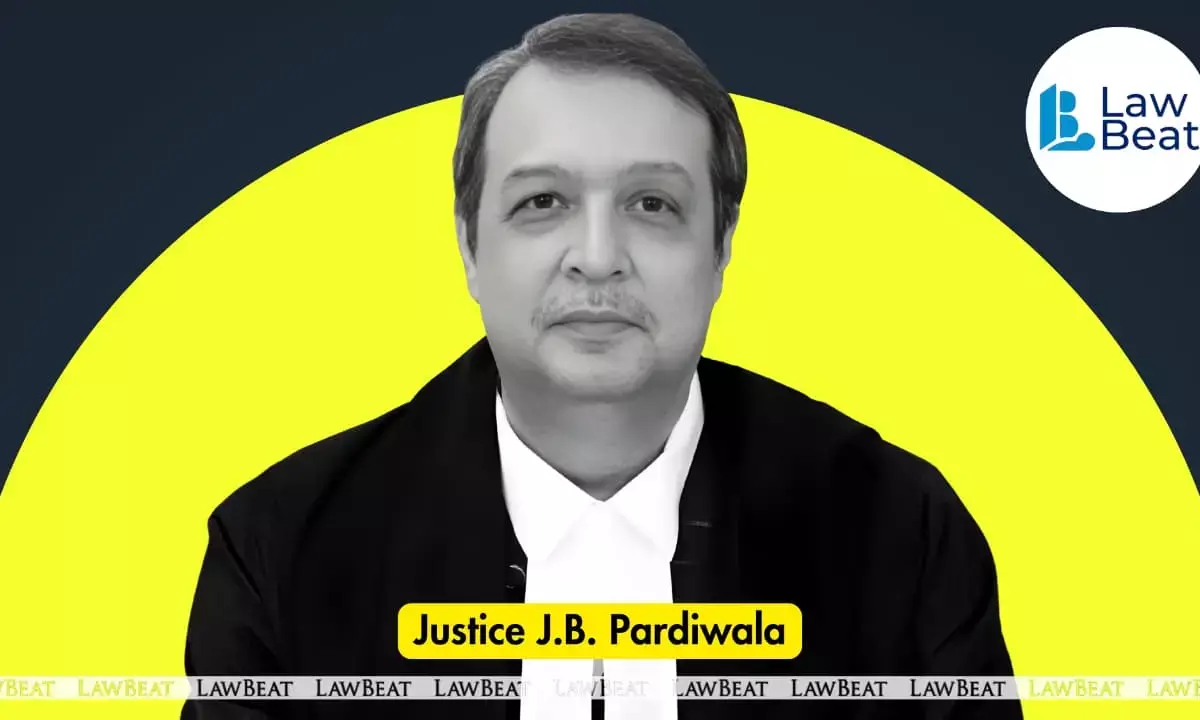Justice J.B. Pardiwala Unveils Supreme Court’s ‘Handbook on Child Rights and the Law’, Calls for Early Sex Education

Justice Pardiwala spoke at the National Annual Stakeholders Consultation on “Safeguarding the Girl Child: Towards a Safer and Enabling Environment for Her in India"
Marking the International Day of the Girl Child, Justice J.B. Pardiwala of the Supreme Court of India on Saturday delivered the inaugural address at the National Annual Stakeholders Consultation on “Safeguarding the Girl Child: Towards a Safer and Enabling Environment for Her in India.”
The event brought together Senior judges, policymakers, child rights experts, and representatives from across the country to deliberate on strengthening institutional and legal mechanisms for the protection and empowerment of girls.
In his keynote address, Justice Pardiwala described it as an “honour and privilege” to be part of a gathering united by a shared purpose, ensuring that every girl in India “has the right to live, learn and grow with equality, free from harm, discrimination and violence such as female foeticide and child marriage.”
Justice Pardiwala underlined that protecting the girl child is not limited to preventing abuse or exploitation, but also includes guaranteeing her equal access to education, healthcare and social opportunities. He said, “It involves promoting her value in families and society and empowering her to make informed choices and reach her full potential as a respected individual and contributing member of the community.”
During the ceremony, Justice Pardiwala introduced the Handbook on Child Rights and the Law, prepared by the Supreme Court’s Centre for Research and Planning under the guidance of the Juvenile Justice Committee.
The comprehensive publication, he noted, is designed as a practical and educational resource for judges, child welfare authorities, administrators, and policy stakeholders involved in child protection.
The Handbook is divided into seven detailed parts. Part I defines the term “child” and explains its legal significance, while Parts II and III explore national and international jurisprudence on child rights. Part IV outlines the statutory frameworks and areas of overlap between laws, and Part V examines comparative practices from other jurisdictions. Part VI focuses on implementation mechanisms, highlighting the roles of administrative systems, legal services authorities, social audits, and judicial oversight. The final section, Part VII, addresses contemporary challenges, including cybercrimes, mental health issues, and the continuing gaps in enforcement.
Justice Pardiwala observed that the document seeks to equip all stakeholders with a deeper understanding of the legal and practical dimensions of child rights in India. “Together, these sections provide a comprehensive understanding of child rights and the challenges associated with securing them,” he said.
Speaking in a reflective and forward-looking tone, Justice Pardiwala urged that the protection of the girl child must go hand in hand with societal change. “On this International Day of the Girl Child, let us renew our commitment not only to uphold the law, but also to nurture a culture of respect, equality, and care,” he said. “Let us carry this spirit into our work, so that the promise of safety and opportunity for every girl is not just an aspiration, but a reality.”
He expressed hope that the two-day consultation would result in meaningful and constructive deliberations, and help build “stronger paths to strengthen our collective resolve and provide practical pathways forward.”
Speech Dated: October 11, 2025
